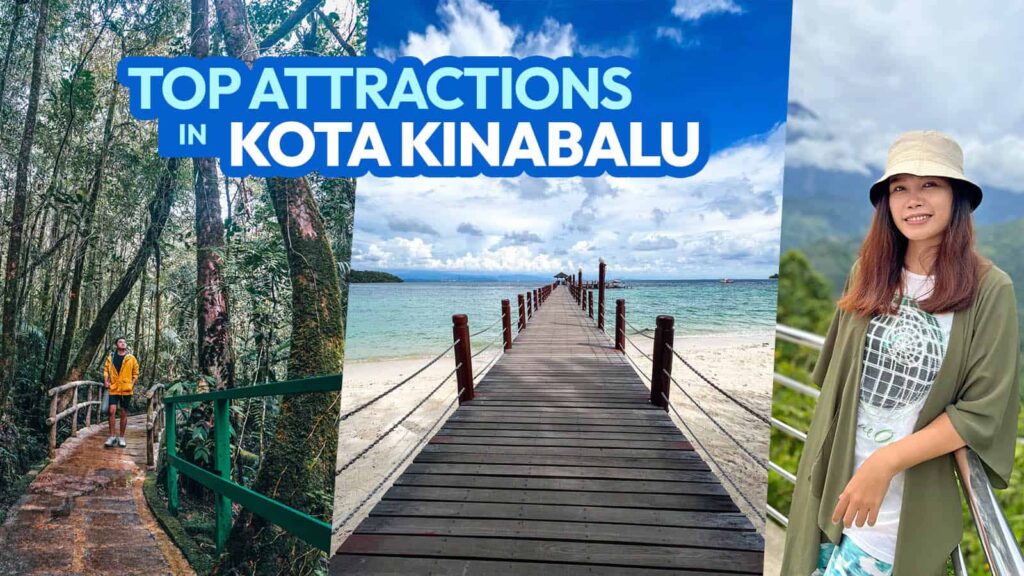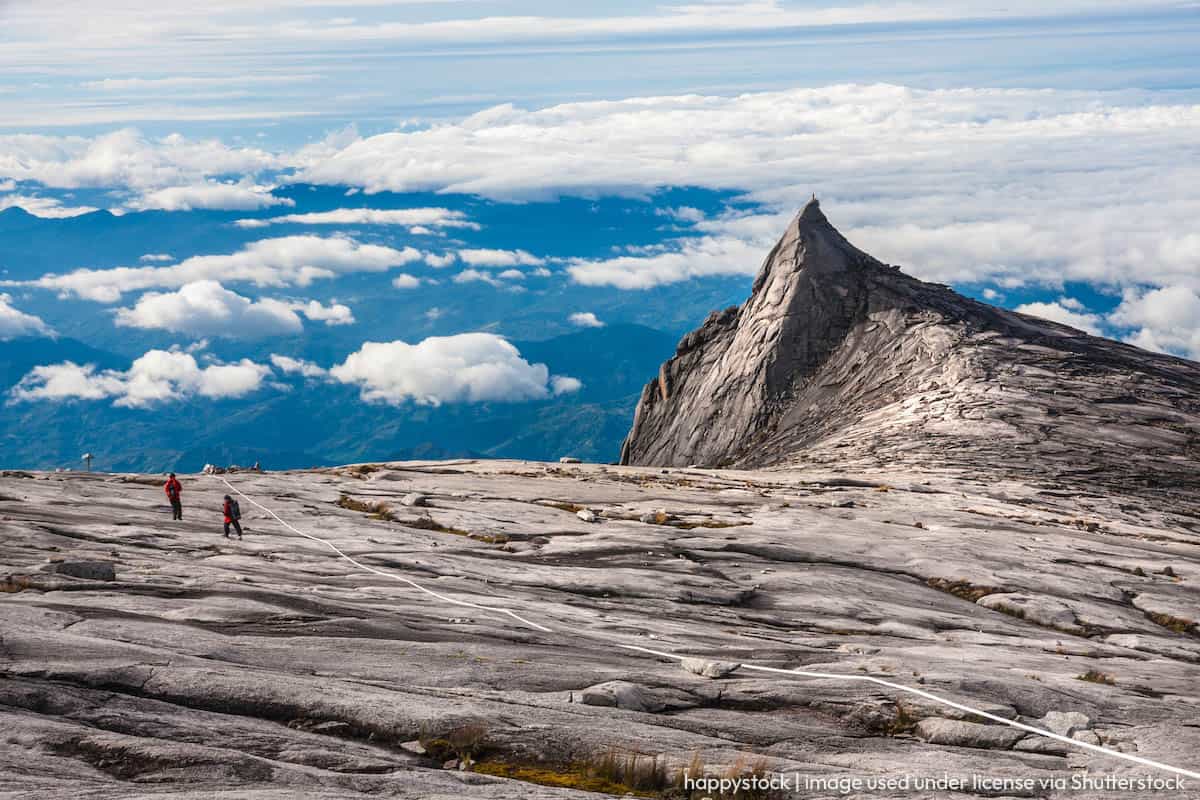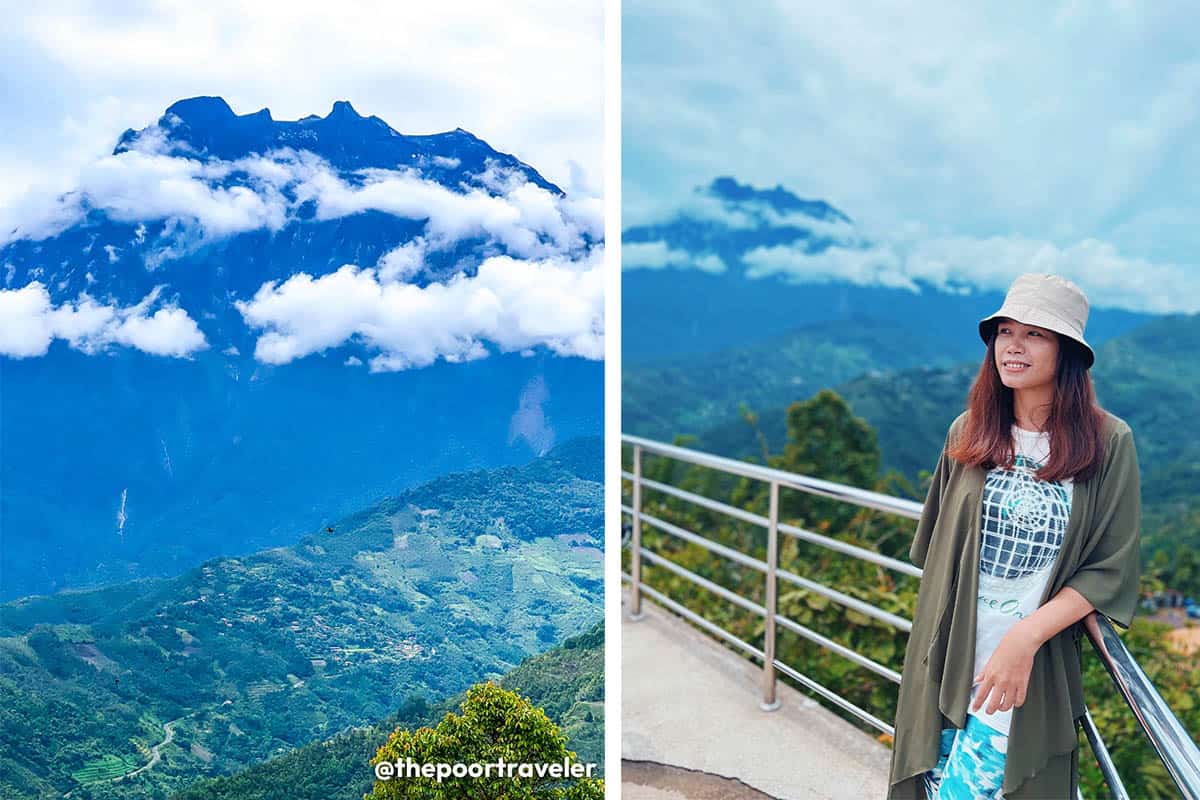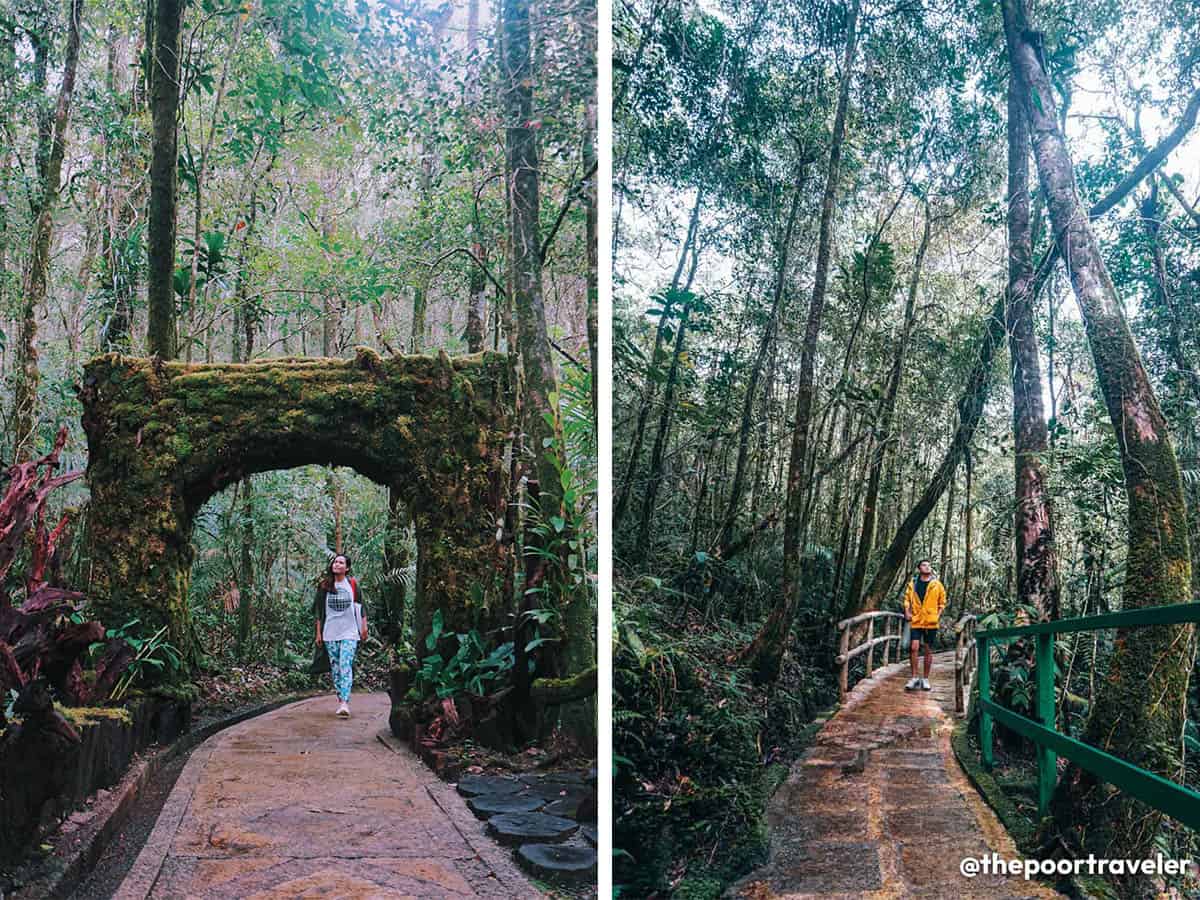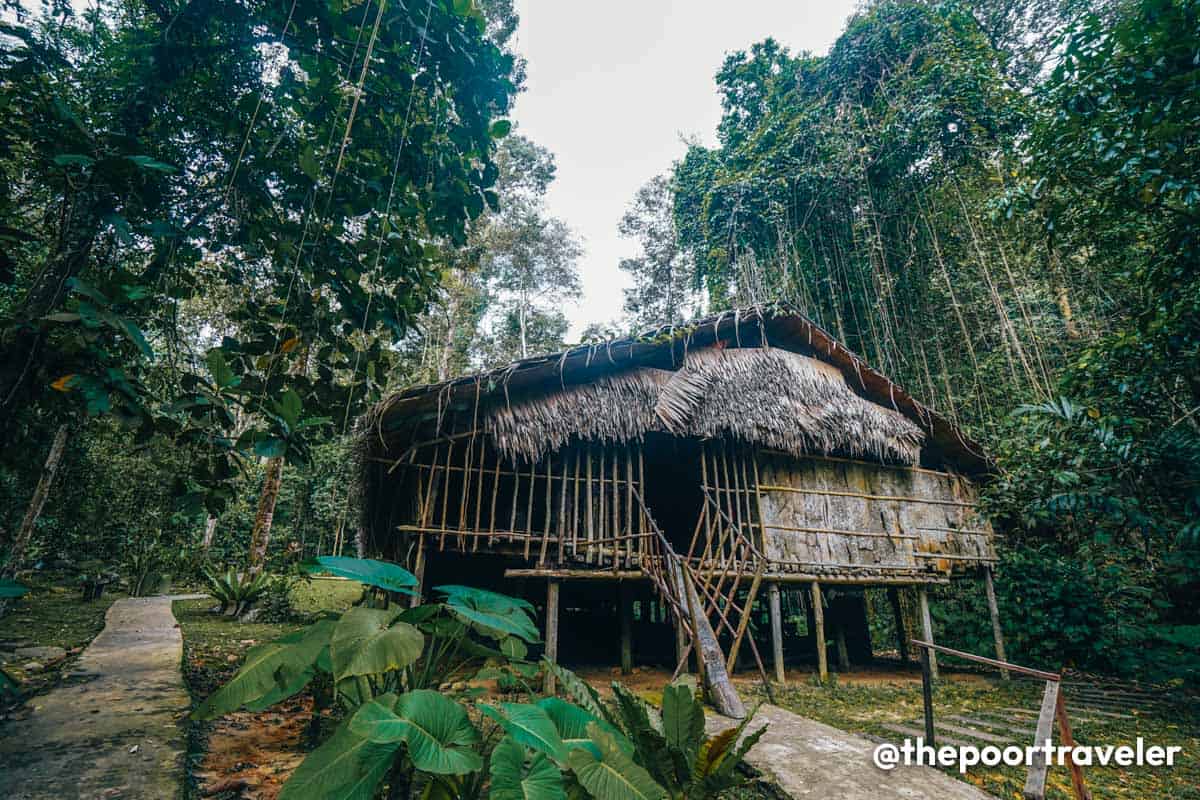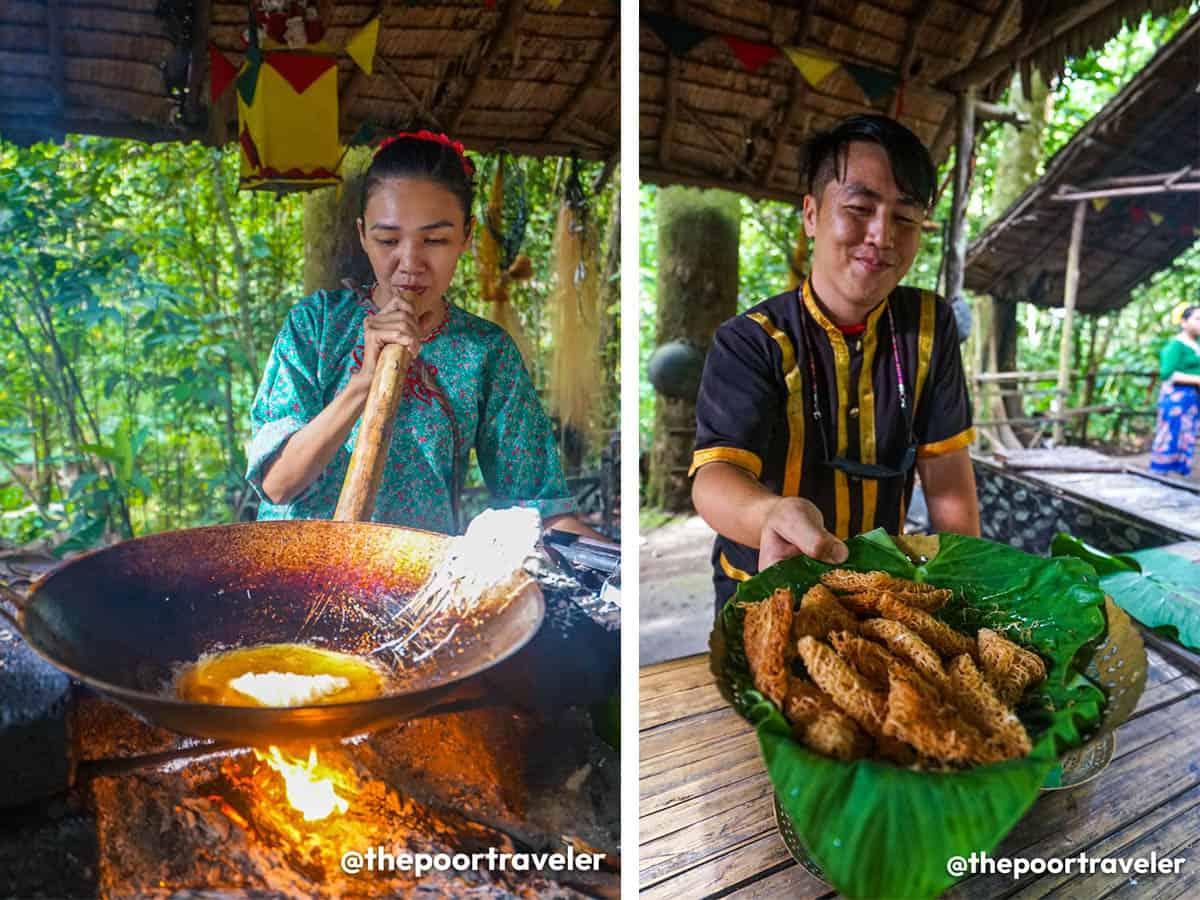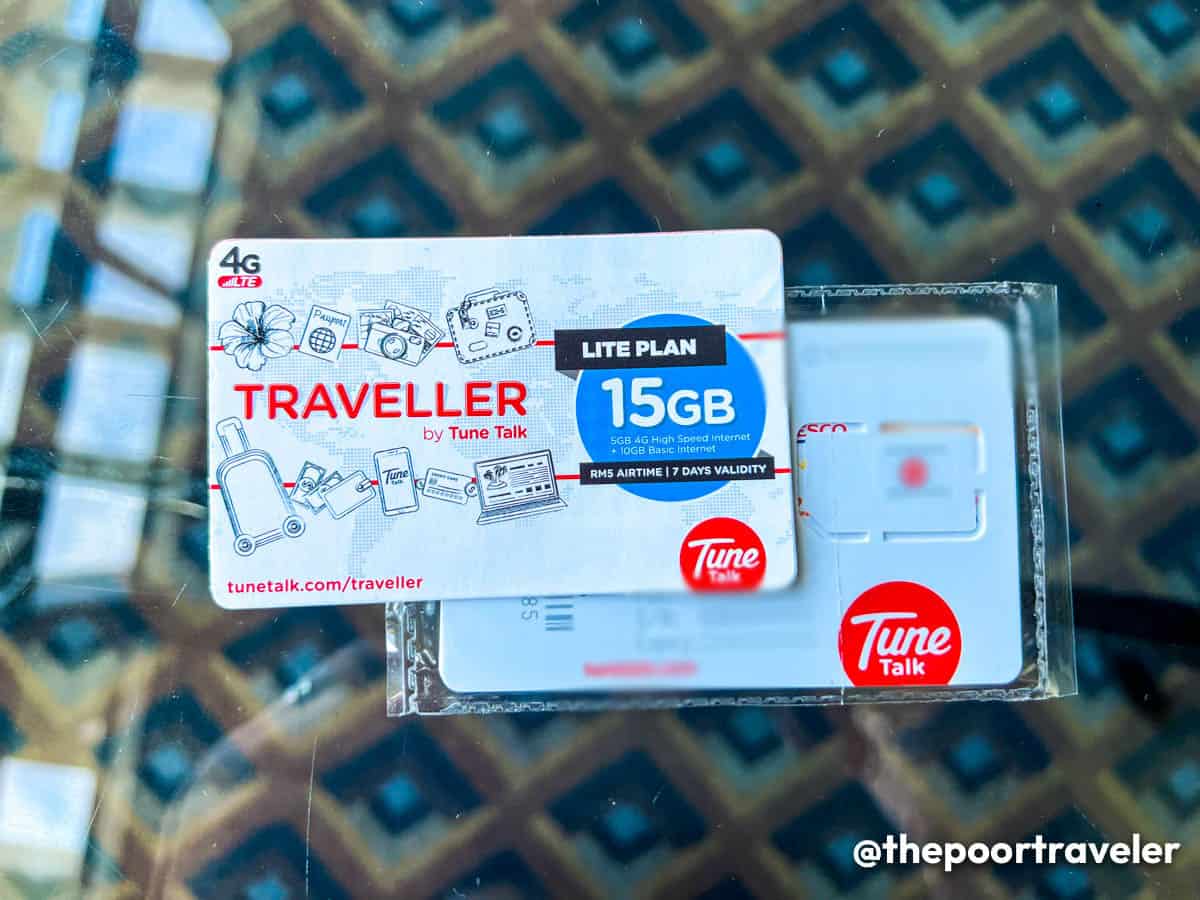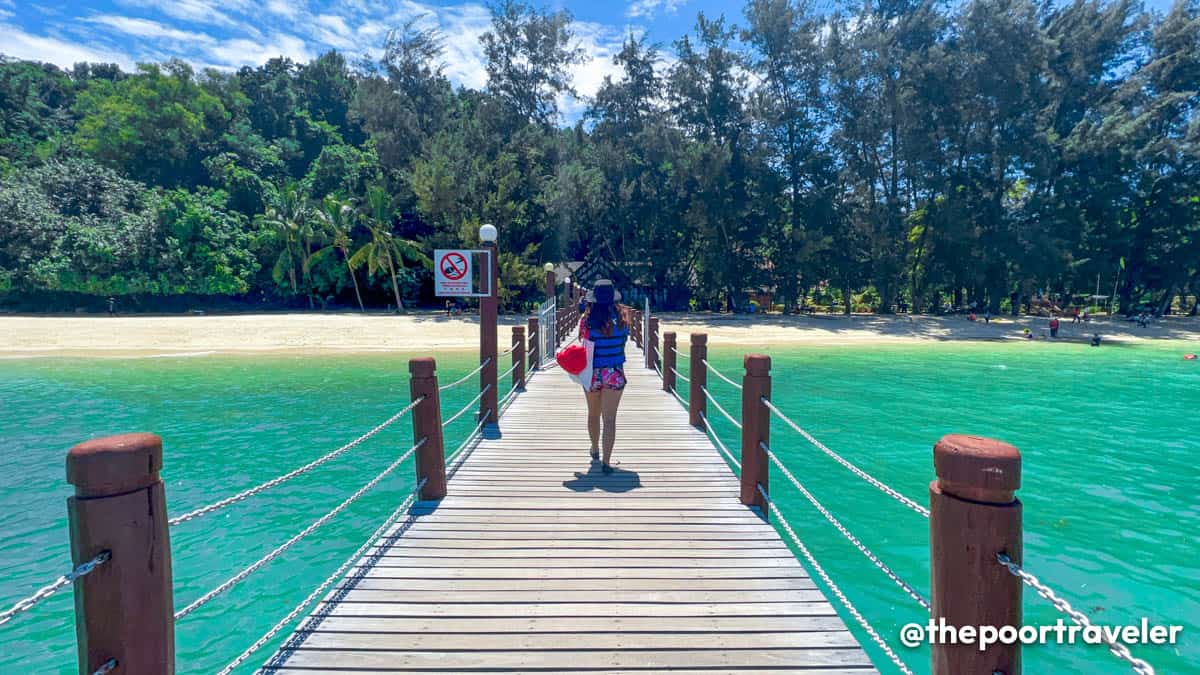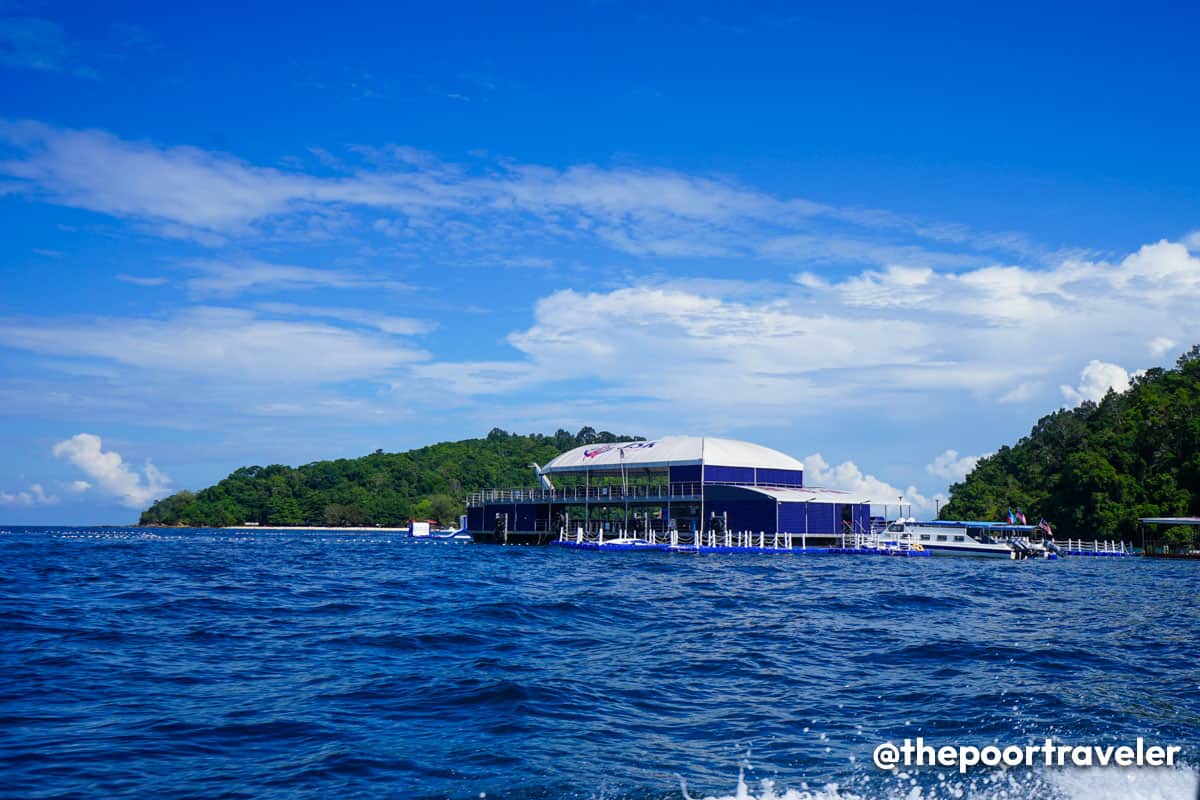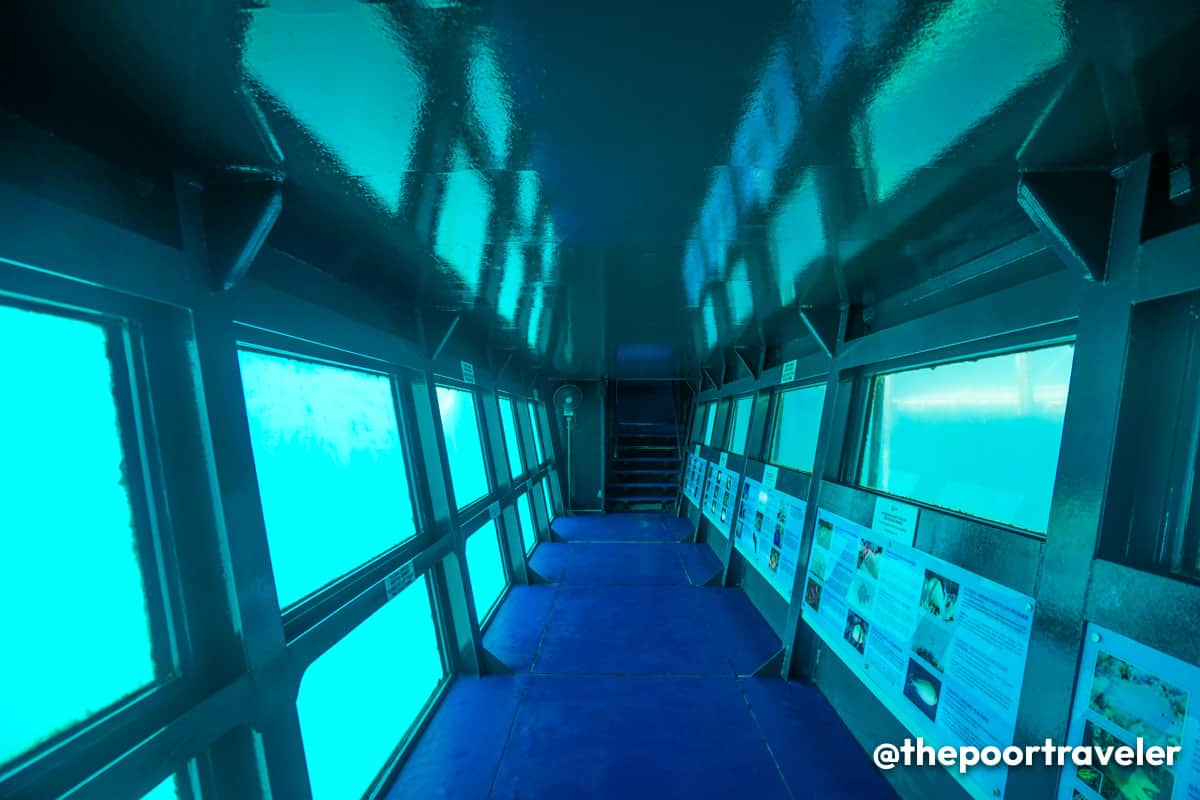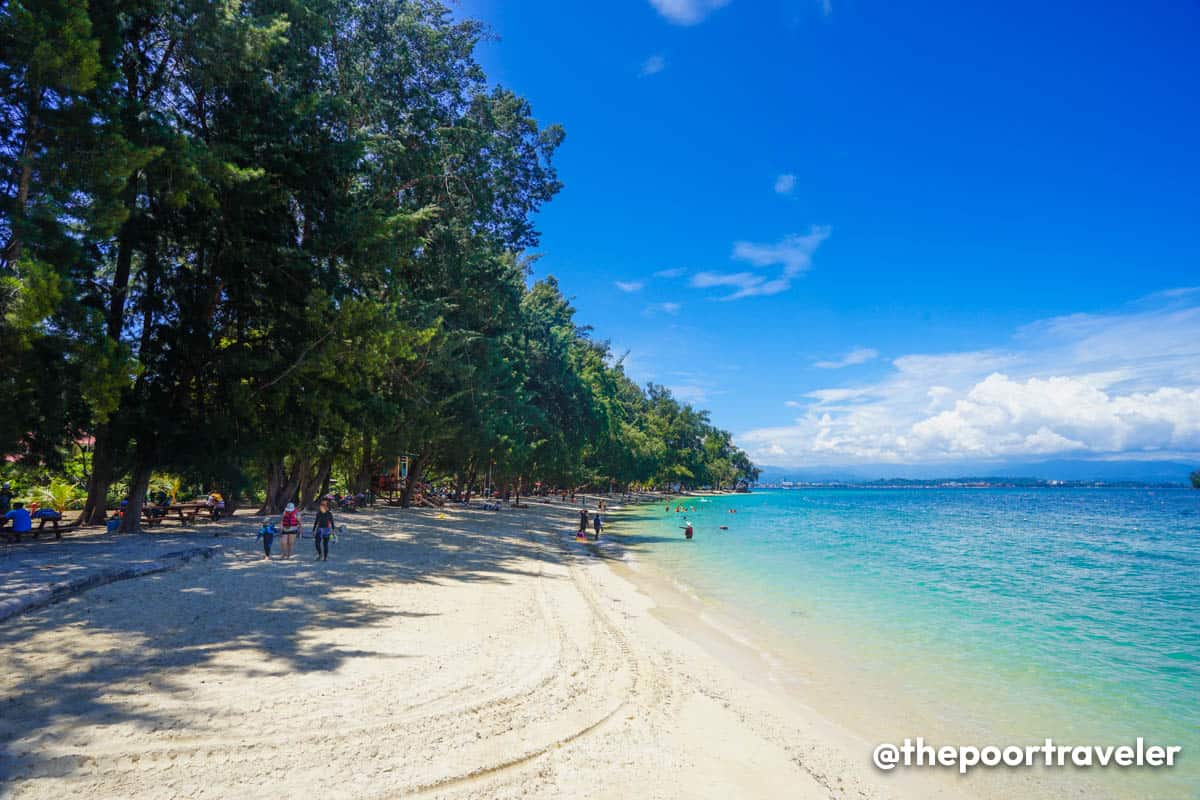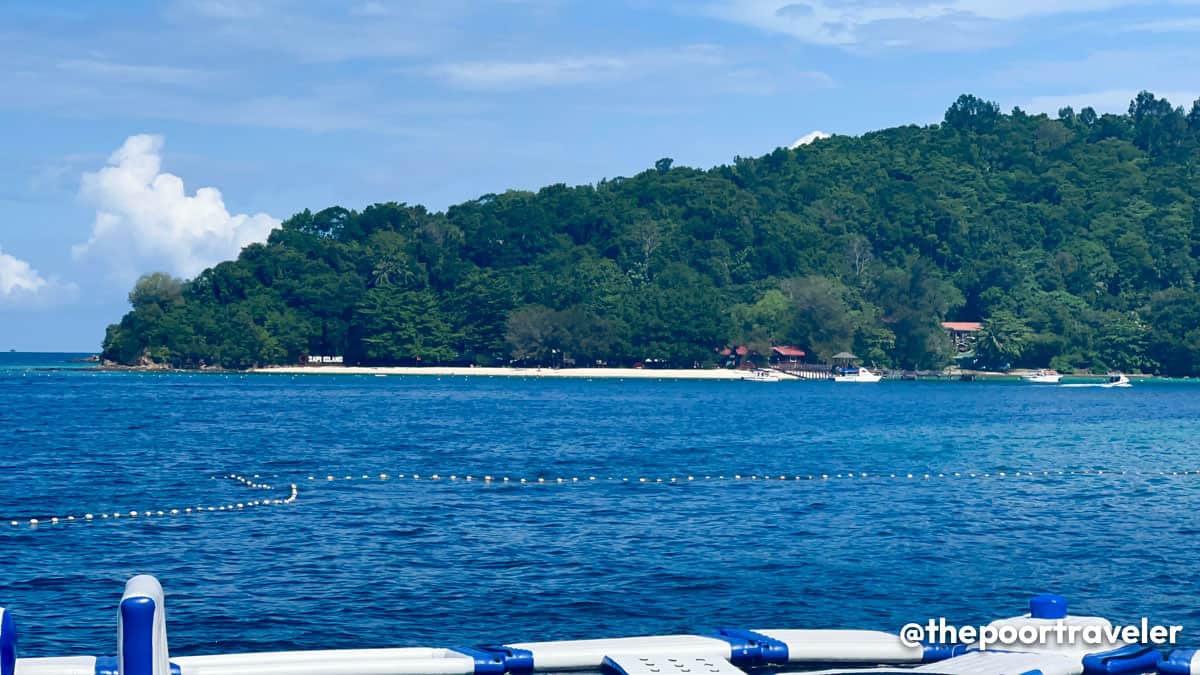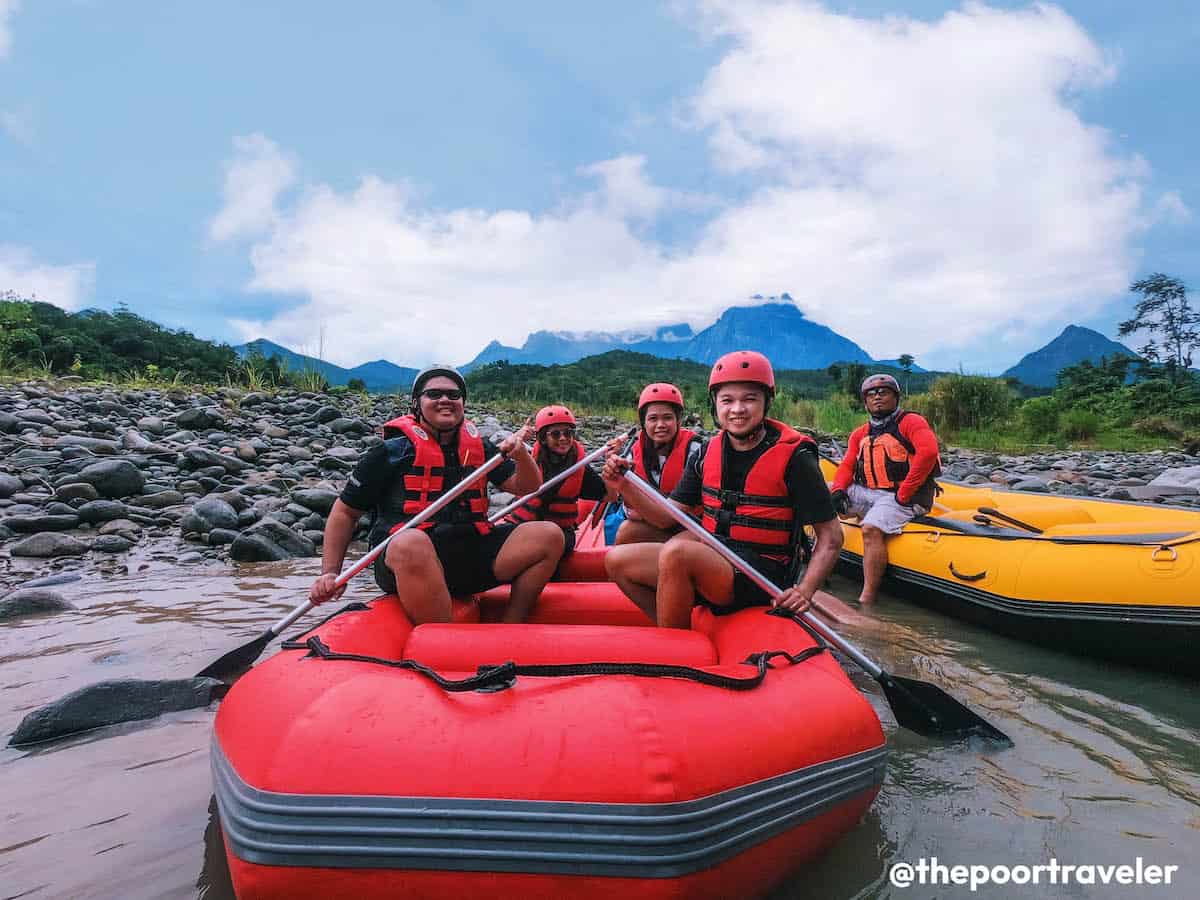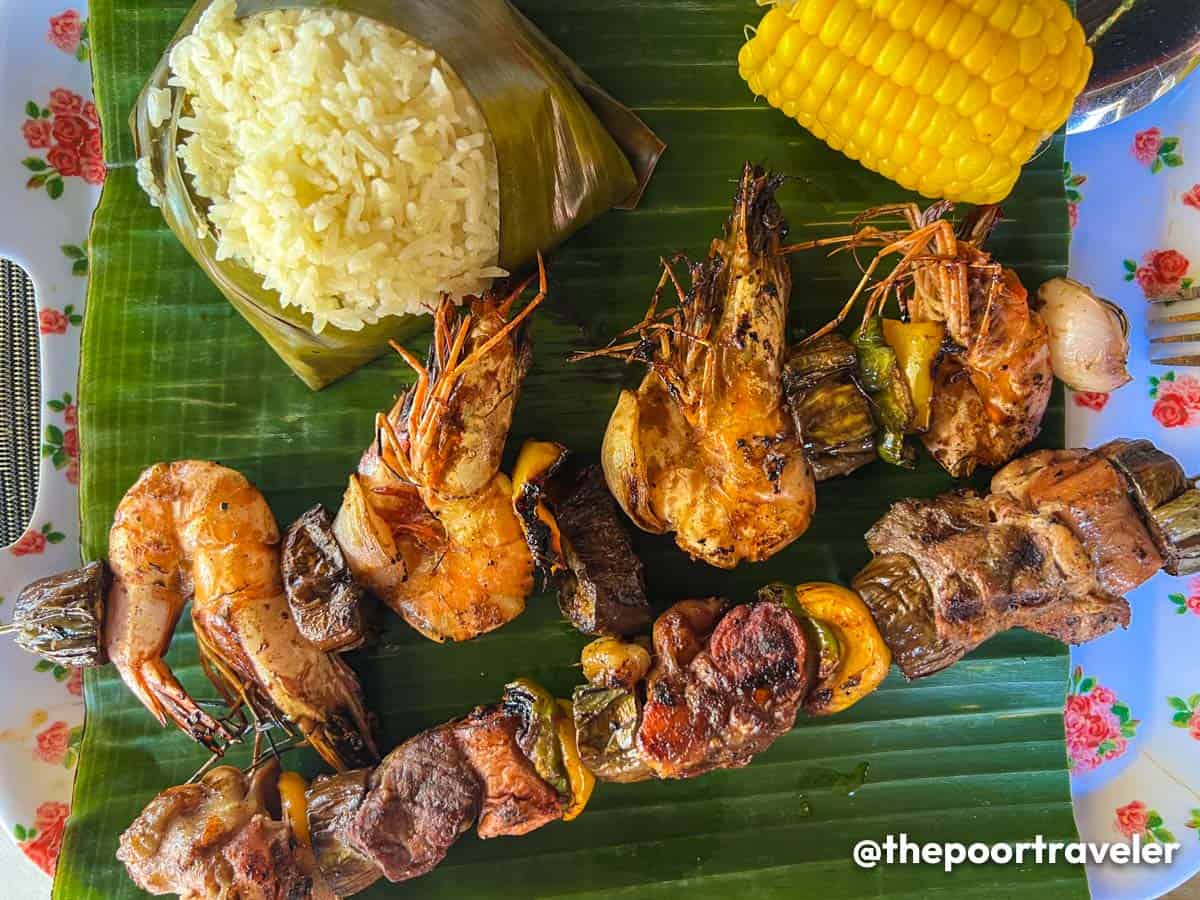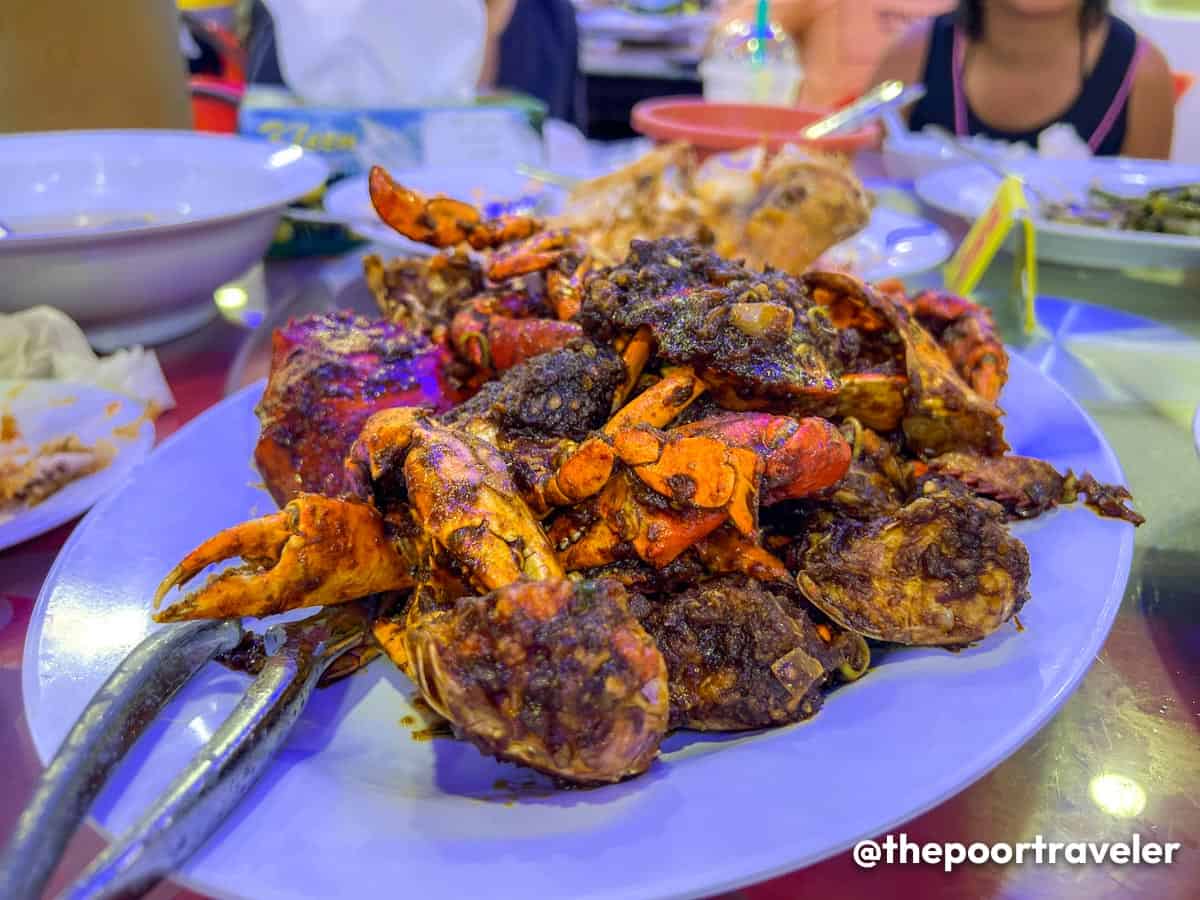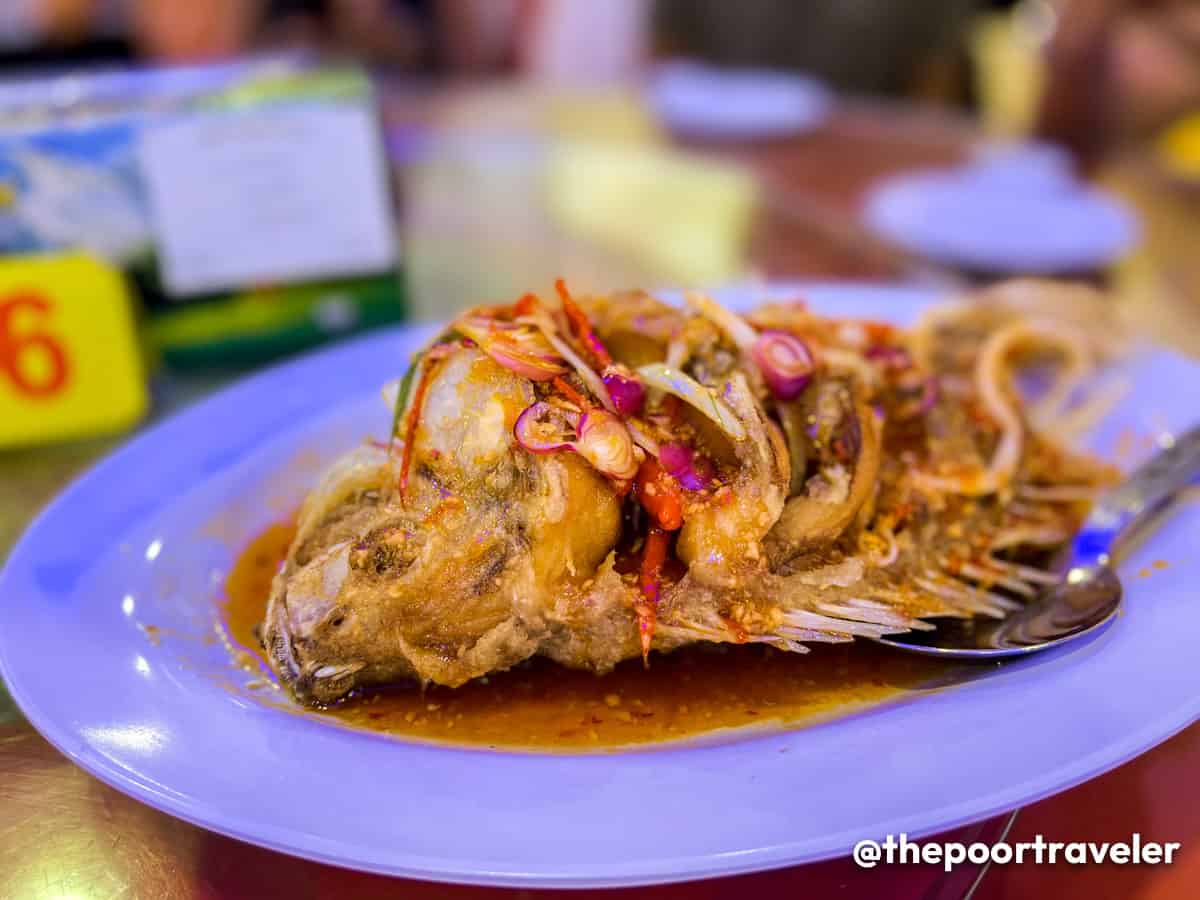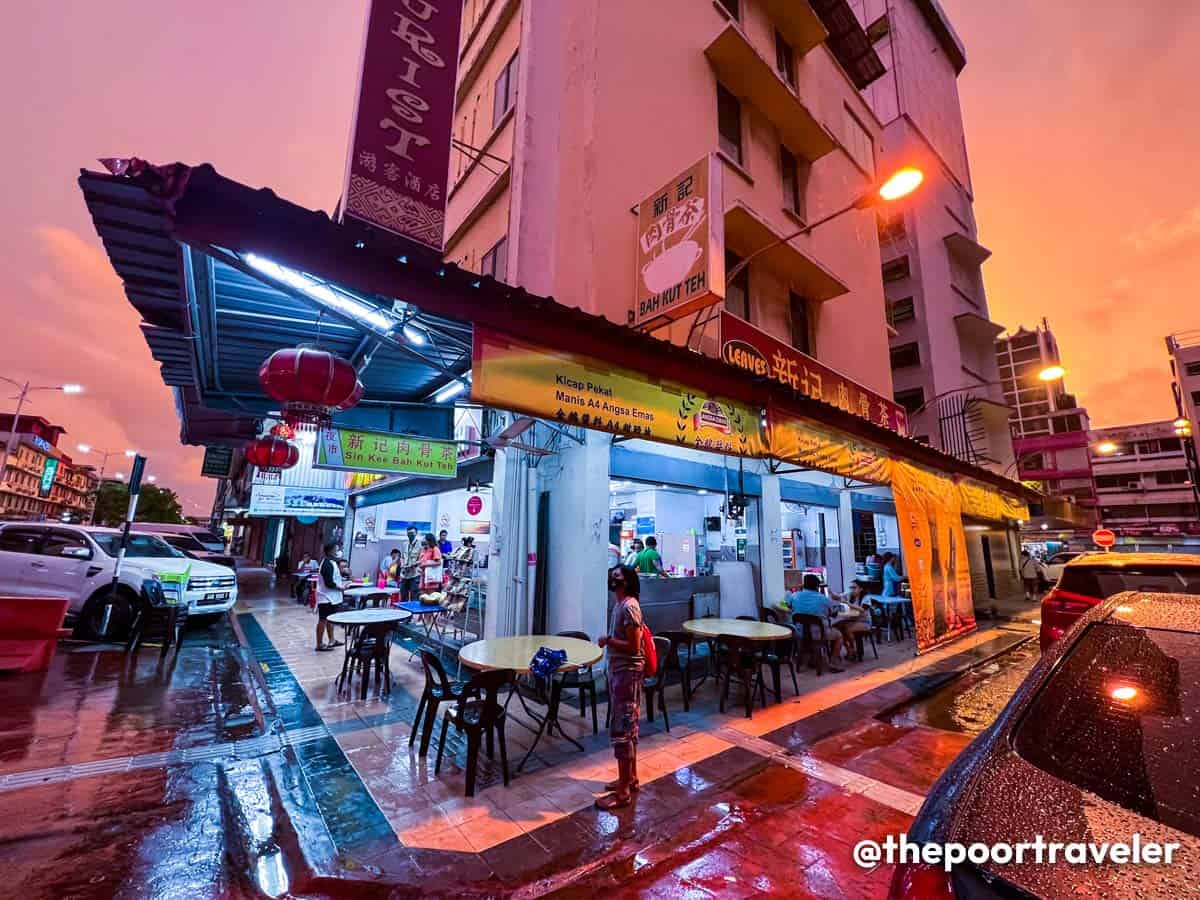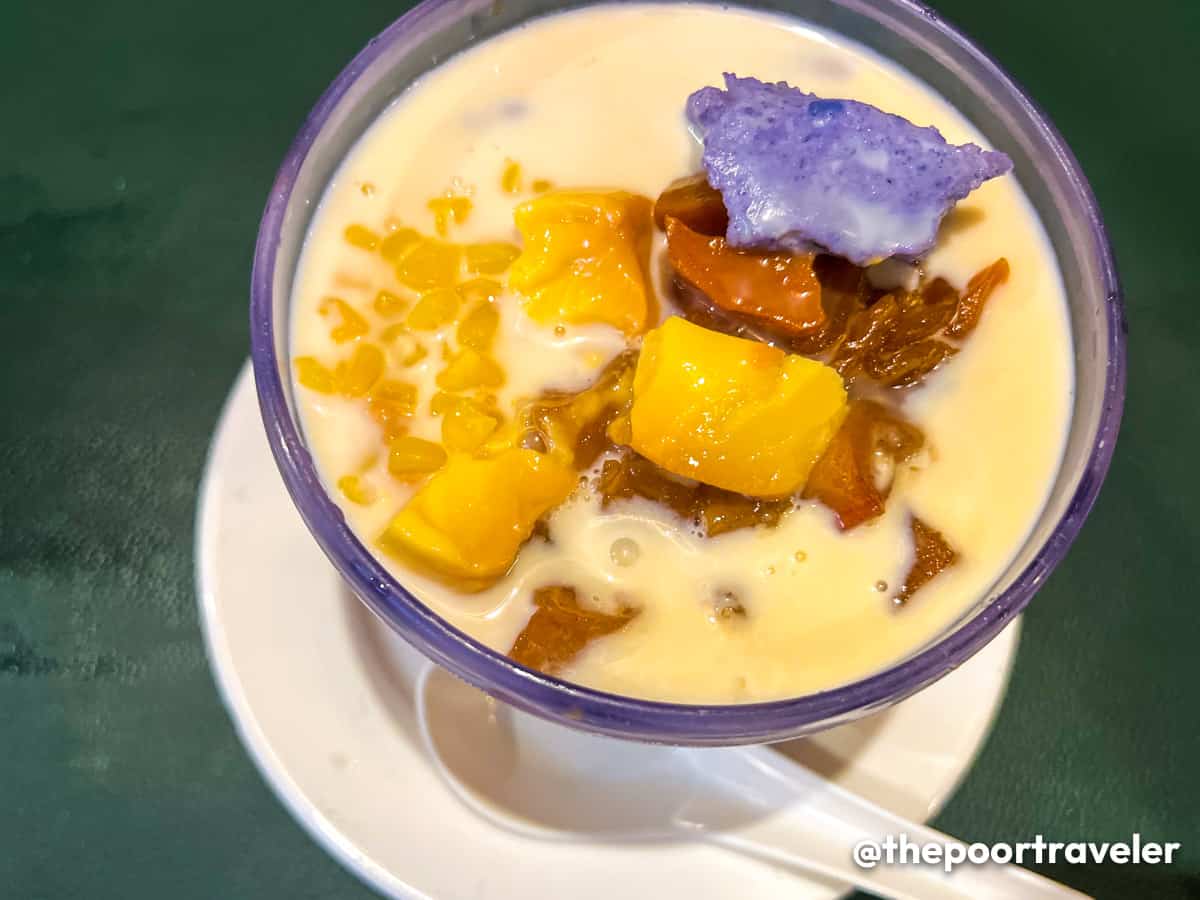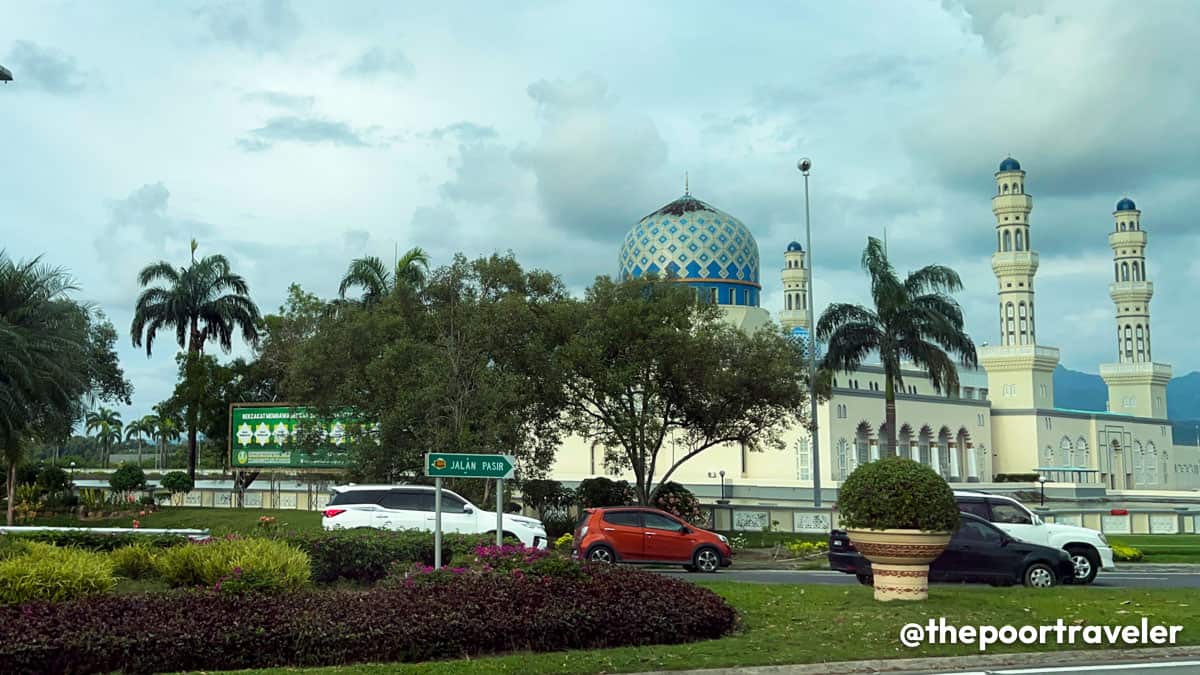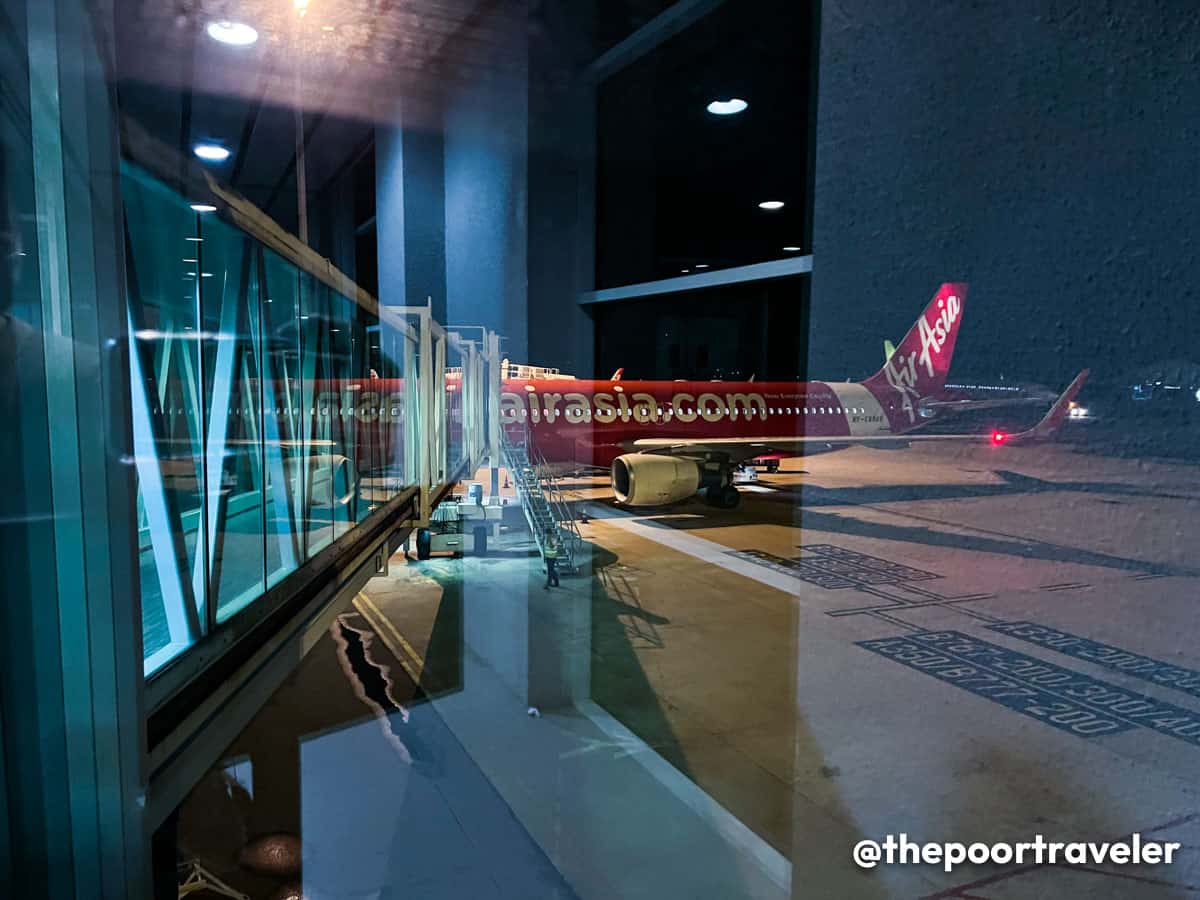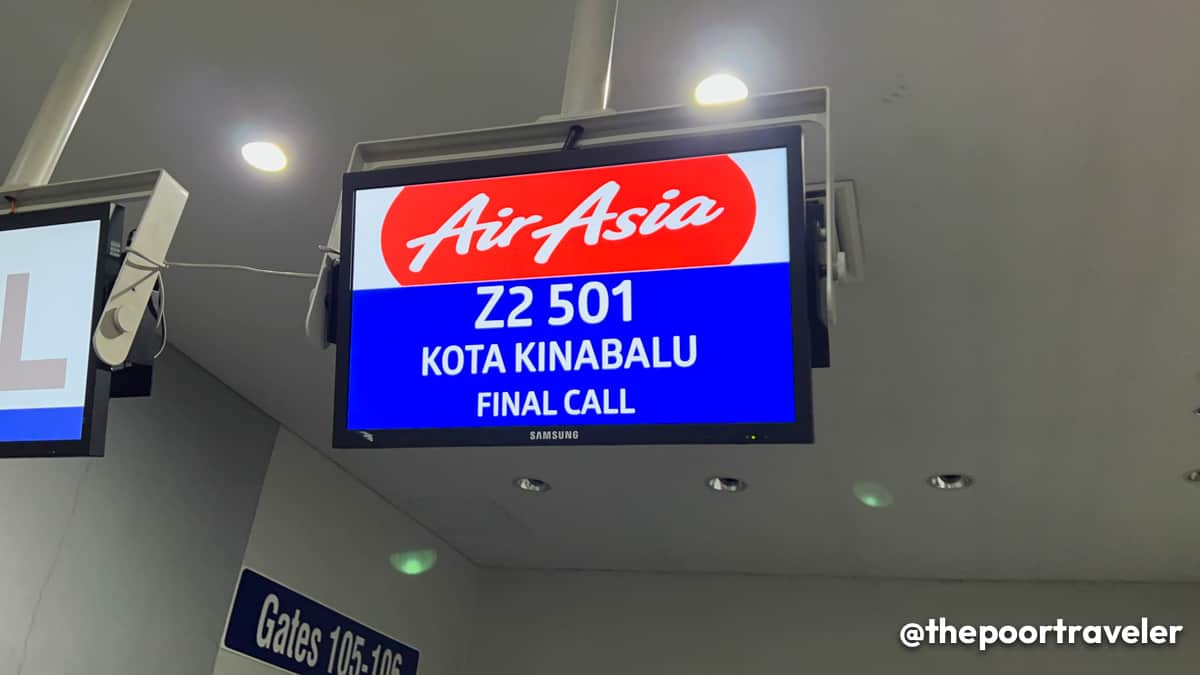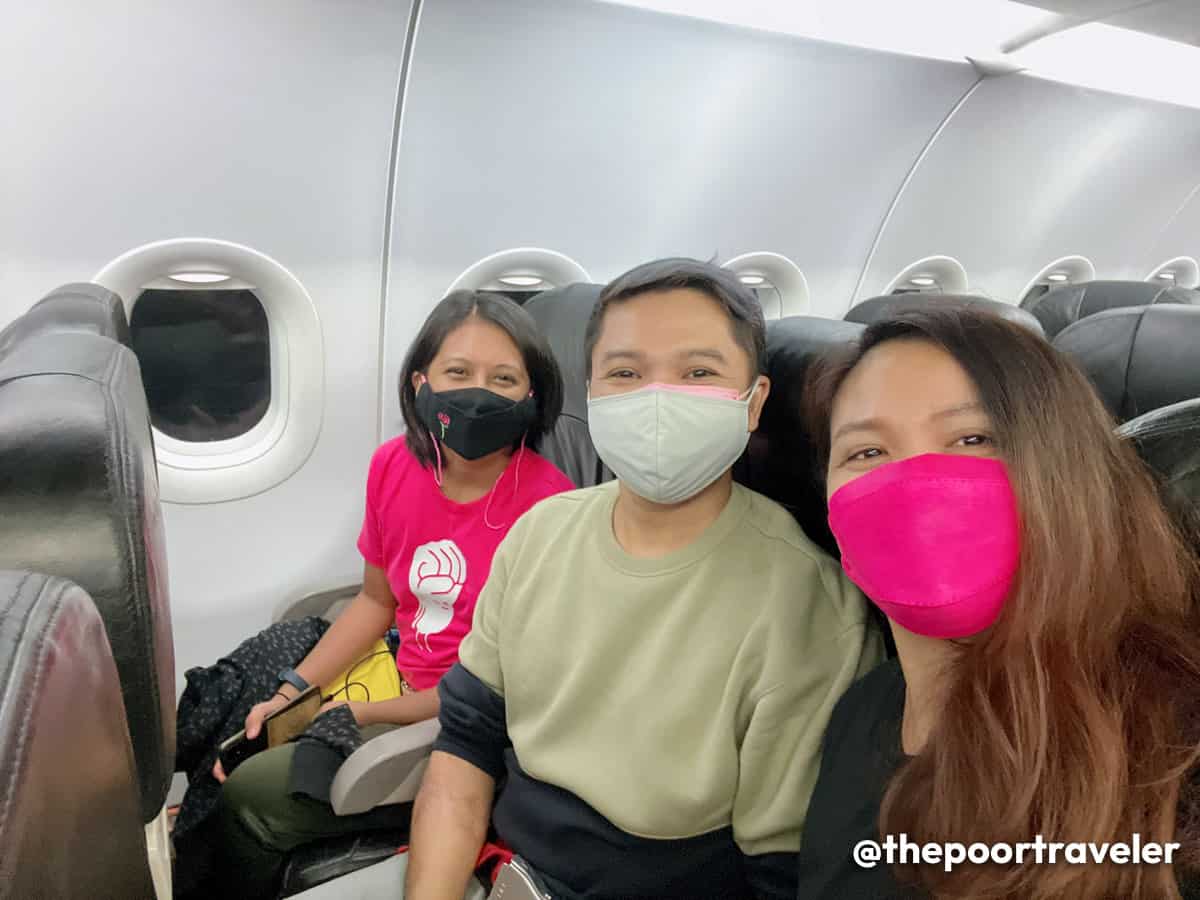
My heart was heavy when I told my friends that I couldn’t come with them. It was our long-awaited barkada trip to Kota Kinabalu, but I needed some adulting to take care. That was 2016. Fast forward to 2022: my heart skipped a beat when I realized my Sabah adventure was finally going to happen. As the saying goes, “There’s a time for everything.” Time I promised myself I would make the most of.
And how Kota Kinabalu surprised me! In a good way, of course. KK, as it is fondly called, offers a variety of sustainable tours — natour, cultour, adventour! Conquer its national parks — both terrestrial and marine. Immerse in the Sabahan culture while you roam around the cultural villages and museums. Get swept away (not literally) by the rapids of its wild rivers. Dive into the colorful underwater world.
Kota Kinabalu might not be on your bucket list, but give it a chance to take your breath away. If you’re wondering what’s in store for you in this part of Borneo, here’s a list of the things to do and places to visit in and near Kota Kinabalu.
WHAT’S COVERED IN THIS GUIDE?
Sticking out imposingly from the forested grounds at an elevation of 4,095 meters (or 13,435 feet), Mt. Kinabalu is the tallest peak in Borneo and one of the tallest in Southeast Asia. The most famous tourist attraction in Sabah, it magnets local and international hikers to its lush surroundings and jagged mountainscape. As for me, and many others like me who missed the chance of climbing it the first visit, it’s one of the main reasons to come back.
Cradled within the dense expanse of Kinabalu Park, a protected UNESCO World Heritage Site in Ranau District, it nurtures hundreds of species of flora and fauna spread across different zones. Low’s Peak (the highest point) and the textured rocky area leading to it are a geological wonder.
Is reaching Mt. Kinabalu’s Low’s Peak one of your bucket list items? You need to take note of the following:
- Mount Kinabalu is managed by Sabah Parks, under the Ministry of Tourism, Culture, and Environment. Yes, they have just one unified body overseeing all the projects regarding environment, culture, and tourism
- Sabah Parks climb permits must be secured in advance through licensed and accredited climb operators. Here’s the list provided by the Sabah Tourism Board: Accredited Tour Operators
- Only 150 hikers are allowed per day, so you need to secure a slot in advance.
- All hikers must book accommodations at Panalaban Base Camp in advance (2D1N), too. Here are the current accommodation options: Laban Rata Resthouse, Pendant Hut, Lemaing Hut, Mokodou and Kinotoki. Heated dormitories and rooms are offered by Laban Rata Resthouse.
- Note that One-Day Mount Kinabalu Climb permits are currently NOT available.
- Climbers must be fully vaccinated and must present proof of vaccination via MySejahtera App (Digital Covid-19 Vaccination Certificate)
- Hikers must be accompanied by accredited mountain guides. The number of guides will depend on the size of the group and the age of the climbers. Children below 12 years old must be accompanied by fully vaccinated parents/guardians.
- The jump-off point for all hikers is the Timpohon Gate at Kinabalu National Park.
- Currently, there are two open summit trails, both starting from Panalaban: the Ranau Summit Trail and the Kota Belud Summit Trail.
- Choose your package type: Non-Ferrata or Via Ferrata. Via Ferrata (Iron Road) is recommended only for seasoned mountaineers and rock climbers.
- All hikers must follow the Covid-19 safety protocols and guidelines. Check if you still need to submit a negative result (self-test RTK Antigen) a day before your arrival.
For more info about booking Mount Kinabalu hike to the summit, visit the this website.
Location: Kinabalu National Park, Ranau, West Coast Division, Sabah
Kinabalu Park Conservation Fee: RM 15 (Adult); RM 10 (Child)
Climb Permit: RM 200 (Adult); RM 80 (Child)
Mountain Guide Fee: RM 230 (16 y/o and above, 1 per 5 pax); RM 230 (below 16 y/o, 1 per 2 pax)
Porter Rate: RM 65 – RM 80 (10KG, one-way, depending on the route). Routes: Timpohon – Panalaban / Panalaban – Timpohon / Timpohon – Sayat-Sayat / Sayat-Sayat – Timpohon / Timpohon – Summit / Summit – Timpohon
Sabah Parks Contact Details: +60 88 523 500 / sabahparks@gmail.com / admin@sabahparks.org.my
Covering a total land area of 75,370 hectares, the sprawling Kinabalu Park is a hotspot for terrestrial biodiversity, sheltering over 100 species of mammals, more than 350 species of birds, about 100 species of reptiles, around 80 species of amphibians, more or less 1,000 species of insects (others are yet to be specified), and more.
All these fauna thriving in various green habitats encompassing 5,000-6,000 species of vascular plants in different climactic zones — lowland forest, lower mountain forest, upper mountain forest, ultrabasic rock forest, granitic boulder vegetation, and sub alpine forest.
The most prominent feature is the magnificent Mount Kinabalu, a major tourist and hiking destination in Southeast Asia. Officially declared a national park in January 1964, Kinabalu Park is the first in Sabah. It covers three districts: Ranau, Kota Belud, and Kota Marudu. The national park was established to protect, preserve, and conserve the natural habitat and feature, the water catchment area, and its cultural and historical heritage.
Aside from Mount Kinabalu, other features are the following:
- Mount Tambayukon
- Mount Kinabal Botanical Garden
- Poring Butterfly Farm
- Poring Orchid Conservation Center
- Rafflesia Conservation Center
- Poring Bamboo Garden
- Poring Ethnobotanical Garden
- bird watching activity
- paragliding
- Canopy Walkway
- Natural Hot Sulfur Spring Water
Into forest bathing? Here are eight nature trail options:
- Kiau View Trail
- Bundu Tuhan View Trail
- Liwagu River Trail
- Silau Silau Trail
- Bukit Burung Trail
- Mempening Trail
- Pandamus Trail
- Bukit Ular Trail
Each trail has its own pros and cons, so choose the one that suits your preference and interest. Or take all the trails if you want and you have time to spare.
The park is managed by Sabah Parks, which is under the Ministry of Tourism, Culture, and Environment. All details regarding the various species of animals and plants were provided by the Sabah Parks management. It was inscribed as a UNESCO World Heritage Site in December 2000 and was included in the ASEAN Heritage Parks list in December 2003.
Location: Kinabalu National Park, Ranau, West Coast Division, Sabah
Conservation Fee: RM 15 (Adult); RM 10 (Child)
Other Fees: Kinabalu Natural History Gallery RM 3; Botanical Garden RM 5 (Adult), RM 2.5 (Child), FREE (6 y/o and below); Guided Walk RM 3 (Adult), RM 1.5 (Child), FREE (6 y/o and below); Audio Visual Display RM 2; Botanical-Guided Walk-Audio Visual RM 8 (Adult), RM 4 (Child)
Sabah Parks Contact Details: +60 88 523 500 / sabahparks@gmail.com / admin@sabahparks.org.my
Getting There: If you are not climbing Mount Kinabalu and just want to do easy walks along its shorter trails, you can check the shared shuttle services or the private services from Kota Kinabalu city center to Kinabalu Park. The rate ranges from MYR 50 – MYR 90, one-way.
But if you are on a budget and you are not in a hurry, you can take the minivan/minibus bound for Ranau at Merdeka Square or a bus bound for Ranau, Sandakan, or Tawau at North Bus Terminal in Inanam. These vehicles will pass by the entrance of Kinabalu Park. The fare is MYR 15-30, one way. The travel time is about two hours.
Located outside the city center, Tanjung Aru is a 2-km beach stretching from Shangri-La Resort & Spa on the northern end and the Kota Kinabalu Meteorological Office on the southern end. Because of its close proximity to the urban core, the beach developed into a popular beach hangout place. Facing the South China Sea, it showcases breathtaking sunsets, painting the sky with splashes of various hues and intensity each day, depending on the weather.
Food stalls offering local fare line the public beach, particularly between Prince Philip Park and the DBKK Carpark (beside Shangri-La Resort), so expect this strip to be crowded on weekends and holidays, especially in the morning and around sunset time.
Popular activities are strolling along the beach, people watching, food tripping, kite flying, having a picnic, and sunset watching, among others.
Aside from Shangri-La Resort, the beach is also home to Kinabalu Yacht Club and Kinabalu Golf Club. While in the area, you might also want to visit Perdana Park along Jalan Mat Salleh (Mat Salleh Street). Your landmark is the Prince Philip Park, located at the end of Jalan Mat Salleh.
Location: Jalan Tanjung Aru, Tanjung Aru, Kota Kinabalu, Sabah
Opening Hours: The beach is open 24/7, but the establishments along the beach usually operate from 10:00 AM to 11:00 PM.
Entrance Fee: FREE
Take a peek into old school Borneo at Mari Mari Cultural Village!
Launched in December 2008, this sprawling manmade open-air museum showcases the roots and soul of Sabahans. It features different traditional houses of the five major ethnic groups in Sabah — the agricultural Dusun and Rungus, the hunters and fisherfolk Lundayeh, the herdsmen and sea gypsies Bajau, and the headhunters and warrior tribe of Murut.
Each traditional house exhibit also presents the costumes, traditional skills, customs, and daily activities in the olden days such as bamboo cooking at Dusun House, fire starting and traditional craft at Rungus House, tree bark craft at Lundayeh House, congkak and kuih jala at Bajau House, and lansaran at Murut House.
Two sessions of guided tour are offered daily — morning and afternoon. Each tour lasts about three hours, with the morning session starting at 10:00 AM and the afternoon session at 2:00 PM. Visitors need to register 15 minutes before the official tour starts. Here’s the flow of the tour:
- Registration and Briefing at the Reception Area
- Start Tour: Crossing the Suspension Bridge
- Visit Five Tribal Houses with Demonstrations/Food Tasting
- Cultural Performance at the Performance Hall
- Lunch (Morning Sesion) or High Tea (Afternoon Session)
- End of Tour
The cultural village’s key landmarks also include the Main Dinner Hall, Souvenir Shop, Dining Hut “Leka-Leki”, and the Performance Hall, where a spectacular indigenous dance show is staged.
Restrooms are located at the reception area, the performance area, and the dining hall area. It is located 20-30 minutes northeast of the city center.
Location: Jalan Kionsom, Inanam, Kota Kinabalu, Sabah
Opening Hours: 10:00 AM – 5:00 PM (Daily); 10:00 AM – 1:00 PM (Morning Session Tour); 2:00 PM – 5:00 PM (Afternoon Session Tour). The schedule might change, so check the official website and Facebook page before going.
Guided Tour Package Rates: RM 100 (Adult); RM 90 (Child, 5-11 y/o). These rates include entrance fee, in-house guide, visit to 5 ethnic traditional houses, traditional demo & activities, cultural performance, and lunch/high tea. Check the official Facebook page for updates and promos.
Booking/Reservation Contact: +60 13-881 4921 / Mari Mari Cultural Village Facebook Page (@marimariculturalvillageborneo)
By the way, it’s best to get connected to the internet to help you navigate the city more conveniently. The most budget-friendly option is purchasing a traveler-friendly local SIM card.
Check out Tune Talk‘s Traveller SIM. During our trip, we used its Lite Plan covering 15 GB data plan with seven days validity upon activation. This allowed us to chat with our friends and families and update our social media accounts as we explored Sabah!
Spanning 4,929 hectares, the Tunku Abdul Rahman Marine Park harbors five islands and their surrounding waters and reefs in Gaya Bay. It was declared a protected area in 1974, making it Sabah’s second national park after Kinabalu Park. Originally, the marine park only included Gaya Island and Sapi Island. Later on, Manukan Island, Mamutik island, and Sulug Island were added in 1979.
The park boasts pristine islands, white-sand beaches, snorkeling spots, and diving sites. Popular activities are swimming, island hopping, beach bumming, water sports, boating, diving, snorkeling, and the Coral Flyer zipline (linking Gaya Island and Sapi Island). Accommodations are also available on the islands, particularly in Gaya Island and Manukan Island.
Jesselton Point Jetty Terminal is the jump-off point to the marine park (and its islands), which is about three kilometers off the Kota Kinabalu mainland. You can book your island hopping tour from one of the many tour operators ticketing booths/counters at the Ticketing Hall located at the entrance of the jetty, right after the old wooden welcome arch. The rates depend on the inclusion and add-on activities. If you want to go scuba diving, it’s best to book in advance with accredited dive operator.
Also under the jurisdiction of Sabah Parks, its headquarters can be found on Manukan Island, but each island has its own satellite office. The park aims to protect and maintain the marine ecosystems, including the underwater flora and fauna.
Location: Gaya Bay, Sabah
Conservation Fee: RM 20 (Adult); RM 15 (Child, below 18 y/o); RM 15 (Seniors, 60 y/o and above); RM 10 (below 6 y/o); FREE (PWDs)
Island Transfer Rates: 1-Island RM 35 (Adult), RM 30 (Child); 2-Island RM 45 (Adult), RM 40 (Child); 3-Island RM 55 (Adult), RM 50 (Child); 4-Island RM 65 (Adult), RM 60 (Child). The rates are inclusive of island terminal fee — RM 7.20 for adults and RM 3.60 for children. The island transfer service for Tunku Abdul Rahman Park covers only four islands — Manukan, Mamutik, Sapi, and Gaya.
Other Fees: Camping Fee RM 5 (Adult), RM 2 (Child); Diving Fee RM 50/head
Jump-Off Point: Jesselton Point Jetty Terminal
Sabah Parks Contact Details: +60 88 523 500 / sabahparks@gmail.com / admin@sabahparks.org.my
JSK Borneo Reef – Pontoon
Touted as the largest reef activity pontoon in South East Asia, the JSK Borneo Reef, often simply called “pontoon” measures 12 meters high, 24.5 meters wide, and 37.5 meters long. This two-level fun center can accommodate up to 300 people, who can enjoy a plethora of activities such as snorkeling, kayaking, swimming, and sea walking (aka helmet diving), in which you could walk on the sea floor while wearing an underwater helmet.
Because it is within the protected Tunku Abdul Rahman Marine Park, the management conscientiously implements strict policy that will help maintain and preserve the surrounding marine environment. In an effort to help conserve and restore Sabah’s coral reefs, the company sets up its own coral farm where the sea walking activity takes place.
If sea walking is too adventurous for you (because it isn’t for everyone), you can still catch a glimpse of the underwater world by descending into their underwater tunnel.
If you prefer to stay above the water but still want your share of thrills, take on the inflatable island obstacle course!
The pontoon is stationed over a hundred meters off the southwest coast of Gaya Island, but you can also have a great view of nearby Sapi Island.
From Jessselton Point Ferry Terminal, the speed boat will take visitors to the pontoon in 15-20 minutes. Check the official website and Facebook page for the complete list of package options and promos. You can find the JSK Borneo Reef kiosk at the Ticketing Hall.
Location: Tunku Abdul Rahman Marine Park, Sabah
Opening Hours: 8:30 AM – 3:30 PM (Daily); 7:30 AM – 8:30 AM (Registration); 8:45 AM (Boarding); 9:00 AM (Departure). The schedule might change, so check the official website and Facebook page before going.
Ocean Escapade Package: Monday to Thursday RM 149 (Adult), RM 99 (Child); Friday to Sunday, Holidays RM 169 (Adult), RM 109 (Child); FREE (0-3 y/o). The package includes meal, boat transfers, all pontoon amenities ECXEPT sea walking (separate fee).
Ocean Escapade + Sea Walking Package: Monday to Thursday RM 229 (Adult), RM 179 (Child); Friday to Sunday, Holidays RM 249 (Adult), RM 189 (Child); FREE (0-3 y/o). The package includes meal, boat transfers, all pontoon amenities.
Jump-Off Point: Jesselton Point Fery Terminal
Manukan Island
The crescent-shaped Manukan Island is a 1.5-kilometer island paradise blessed with willowy trees, fine white-sand beaches (especially on the southeastern coastline), and turquoise waters perfect for swimming, snorkeling, and scuba diving. It is the second largest and the most developed in the protected area, featuring 20 units of cabins, a few restaurants, shops, a diving center, a museum, a clubhouse, a swimming pool, and sports grounds — football, volleyball, and sepak takraw.
Beach attractions and water-related activities are concentrated on the eastern side. The heavily forested Manukan has hiking trails for those who want to commune with nature and further explore the island.
The cabins are managed and operated by Sutera Sanctuary Lodges. If you are planning to stay here, you need to book in advance.
Location: Tunku Abdul Rahman Marine Park, Sabah
Conservation Fee: RM 20 (Adult); RM 15 (Child, below 18 y/o); RM 15 (Seniors, 60 y/o and above); RM 10 (below 6 y/o); FREE (PWDs)
Other Fees: Camping Fee RM 5 (Adult), RM 2 (Child); Diving Fee RM 50/head
Jump-Off Point: Jesselton Point Jetty Terminal
Boat Transfer: Refer to Tunku Abdul Rahman Marine Park section. Again, the island transfer service for Tunku Abdul Rahman Park covers only four islands — Manukan, Mamutik, Sapi, and Gaya.
Gaya Island
With a total land area of almost 1,500 hectares, Gaya Island is the largest of the five islands. The name came from the Bajau word gayo, meaning “big”. It is also the closest to downtown Kota Kinabalu via Jesselton Point Ferry Terminal.
Its lush hilly landscape reaches an elevation of 300 meters, featuring ridges stretching across the island and a 20-kilometer hiking trail, which also includes a plank-walk through a mangrove forest.
Police Beach is the most popular beach, nestled on the northwestern coast, facing Bulijong Bay and fronting one of the three secluded five-star hotels on the island — the Bunga Raya Island Resort. The clear calm waters kissing the 400-meter sandy stretch of white sand is ideal for swimming. The other two upscale resorts are the Gaya Island Resort and the Gayana Marine Resort.
Gaya Island is bejeweled with colorful coral reefs, making it one of the best snorkeling and diving destinations in Sabah. The local settlement took over the eastern side of the island.
Location: Tunku Abdul Rahman Marine Park, Sabah
Conservation Fee: RM 20 (Adult); RM 15 (Child, below 18 y/o); RM 15 (Seniors, 60 y/o and above); RM 10 (below 6 y/o); FREE (PWDs)
Jump-Off Point: Jesselton Point Jetty Terminal
Boat Transfer: Refer to Tunku Abdul Rahman Marine Park section. Again, the island transfer service for Tunku Abdul Rahman Park covers only four islands — Manukan, Mamutik, Sapi, and Gaya.
Mamutik Island
Just a kilometer south of Manukan, the triangular Mamutik Island is the smallest of the five islands. Its western side is characterized by a rocky shore, while the rest of the island is fringed with sandy beaches. Not as crowded as the others, it offers an alternative beach experience for those who prefer a more rugged but quieter spot.
Swimming and snorkeling are the popular activities here, so be prepared to meet some of these marine wonders — clown fish, rainbow fish, anemones, surgeon fish, zebra fish, and stingray among others. The surrounding waters are mostly deep, so keep an eye on your kids and companions who are not good swimmers. It’s also best to wear beach footwear to protect your feet from broken shells and corals.
Amenities on the island include changing rooms, toilets, benches, picnic huts, a restaurant, and rental shop for snorkeling, diving, and camping.
Mamutik is only three kilometers off the mainland, so tourists can view the city from the sandy eastern side of the island on a clear day. The main jump-off point is at Jesselton Point, but other terminals, such as Sutera Harbour Marina Jetty and Tanjung Aru Beach, have access to Mamutik Island.
Location: Tunku Abdul Rahman Marine Park, Sabah
Conservation Fee: RM 20 (Adult); RM 15 (Child, below 18 y/o); RM 15 (Seniors, 60 y/o and above); RM 10 (below 6 y/o); FREE (PWDs)
Jump-Off Point: Jesselton Point Jetty Terminal
Boat Transfer: Refer to Tunku Abdul Rahman Marine Park section. Again, the island transfer service for Tunku Abdul Rahman Park covers only four islands — Manukan, Mamutik, Sapi, and Gaya.
Sapi Island
Sapi Island is like a remora fish swimming beneath its partner shark — the larger Gaya Island. Situated about two meters southwest of Gaya Island and covering an area of over 10 hectares, this densely forested island is definitely dwarfed but not really overshadowed by its bigger sister. Come low tide, the sisters link arms, creating sandbar in between.
The thick vegetation provides shades for visitors. Plenty of picnic huts and tables are scattered around the main beach area. Popular activities are swimming, snorkeling, and diving. The best spot to go diving is on the southeastern tip of the island. Some of the marine life found around the coral garden are stingrays, cuttlefish, zebra fish, clown fish, and moray eels.
Note that it can get crowded on weekends and holidays, particularly the main beach; however, you can explore further and find one of the few hidden beaches when you traverse the five-kilometer nature trail. Be sure to wear comfortable beach footwear when exploring the island. The trail will lead trekkers to the highest point of the island.
Sapi is also home to the wild macaques and two-meter long monitor lizards. Considering the wildlife thriving here, be extra careful. As much as possible, do not feed them, keep your distance, and just let them be. The macaques might grab some of your stuff to look for food. Always look where you are going to avoid stepping on a monitor lizard.
Location: Tunku Abdul Rahman Marine Park, Sabah
Conservation Fee: RM 20 (Adult); RM 15 (Child, below 18 y/o); RM 15 (Seniors, 60 y/o and above); RM 10 (below 6 y/o); FREE (PWDs)
Jump-Off Point: Jesselton Point Jetty Terminal
Boat Transfer: Refer to Tunku Abdul Rahman Marine Park section. Again, the island transfer service for Tunku Abdul Rahman Park covers only four islands — Manukan, Mamutik, Sapi, and Gaya.
Mild or Wild? But it doesn’t really matter because the rapids will decide for you. This will delight thrill-seekers who are always on the lookout for extreme activities that will make their adrenaline pumping.
Enjoy the rough ride as the raging waters from Mount Kinabalu take you on a bumpy rafting experience along the Kadamaian River in Kota Belud, a town tucked about two hours north of Kota Kinabalu city center.
The whole rafting stretch is about 10 kilometers with rapid classification of Grade 1-2, so this is perfect for first timers. Our team had experienced white water rafting in Davao and Cagayan de Oro, both reaching the Grade 4 classification, which is the ceiling for leisure white water rapids.
Speaking from personal experience, both Yosh and I got tossed into the water here at Kadamaian, and I had a blast getting carried away for a moment before I was pulled back up onto the raft immediately. But that’s just me. Yosh got snatched by the rapids for three (long) minutes, and for better or worse, I’m sure it’s now one of his most unforgettable travel experiences.
The whole white water rafting activity lasted almost two hours. Once at the jump-off point, you will have safety briefing first. Depending on the package you book, it usually includes light snack or lunch buffet. Don’t forget to bring the following: extra clothes, dry bag, waterproof camera or GoPro, aqua shoes or sandals with straps, rash guard or comfortable rafting outfit, towel, and sunscreen.
Location: Kadamaian River, Kadamaian, Kota Belud, Sabah
Getting There: The most convenient way is to book a package tour with roundtrip transfer between Kota Kinabalu and the jump-off point in Kadamaian.
When in Kota Kinabalu, don’t pass up any opportunity to stuff your face with scrumptious seafood!
KK is surrounded by the richest waters on the planet, providing delicious bounty to city’s popular restaurants and food meccas like the Waterfront Seafood Night Market along Jalan Tun Fuad Stephens and Api-Api Night Food Market at Gaya Street. You can enjoy them grilled, deep-fried, steamed, or topping your favorite noodle dish.
Another popular culinary brand is Welcome Seafood Restaurant with three spacious branches: Asia City (KK City Center), Inanam (North KK), and Penampang (South of KK). We dined at Asia City branch and the place was really packed with diners, locals and tourists alike. Outdoor and indoor seating are available.
We had their bestselling kam hiong crab (kam heong crab), a popular Malaysian dish that combines Malay, Chinese and Indian influences. Kam heong literally means “golden fragrance”, referring to the sweet, aromatic scent that steams out from its sauce, which is cooked with chillies, curry, and other spices. Welcome takes pride in their special sauce, which is a great blend of salty and spicy.
We also had their dry butter prawns, deep-fried squid (calamari), and fried fish in sweet-and-sour sauce.
Kota Kinabalu serves as a key gateway to the North Borneo regions, welcoming people from various cultures. This made Sabahan cuisine eclectic, but mostly mixing local with other Southeast Asian and Chinese flavors.
But the most intriguing delicacy is probably sinalau bakas, a native Kadazandusun treat. The name translates to “smoked wild boar”. Many roadside eateries and stalls can give you a taste of this meaty goodness, but most tour operators let guests try it at one of the stalls on the way to or from Kinabalu Park. Unfortunately, we didn’t get to try this ourselves as the stalls were closed when we dropped by.
Bak kut teh is a staple dish, more like a comfort food, that is usually served at dinnertime. But in the past, farmers usually consumed the steaming hot light broth early in the morning before they go to the fields. Literally means pork rib tea, the pork is cooked or added (when meat are already partially cooked) in a cloudy herbal broth. Some restaurants offer chicken, seafood, and beef aside from pork. Innards and dimsum balls can also be added.
Malaysian bak kut teh is served with you char kway (fried dough). Locals usually eat the meat by dipping them in a soy sauce with chili and minced garlic. Chinatown (or Gaya Street area) is dotted with restaurants serving bak kut teh, and one of them is Sin Kee, which we had the pleasure of trying when we visited.
You’ll also find Filipino food spots throughout the city including Tambayan at Kainang Pilipino at Api-Api Center. Owned and run by a Pinay immigrant, this 24-hour-open restaurant has a menu that boasts a number of Pinoy favorites from sizzling plates of sisig to icy desserts like halo-halo.
Immerse in the Sabahan culture and experience the lifestyle of the locals here!
This bustling strip of commercial establishments, both old and new, dates back to 1902. Originally named “Bond Street” during the British colonial period, the street evolved from an industrial trading railway track — transporting rubber between Tenom and the wharf in Jesselton Harbour, which was then the main gateway to North Borneo before commercial flights were made available — into a busy commercial street where many shops and dining places flourished.
Spanning from Lintasan Deasoka near the Kota Kinabalu City Hall and Mandarin Hotel all the way to the old Jesselton Post Office, Gaya Street is home to old family businesses passed from generation to generation, most of them are coffee shops and restaurants operated by Chinese families; hence, the area is also dubbed as the Chinatown of Sabah. The end of the street near the KK City Hall is marked by a Chinese arch gate erected in 2005.
On Sundays, it transforms into a pedestrian-only street where regular market fair is held, particularly in the morning. Local merchants, as well as foreign traders (Indonesians, Filipinos, etc.), sell various kinds of items and products: agricultural produce, local snacks and street food, arts and craft, flowers, souvenirs, footwear, clothes and textiles, and many others.
Location: Kota Kinabalu Central Business District, Kota Kinabalu, Sabah
Street Fair Hours: 6:00 AM – 1:00 PM (Sundays). The schedule might change, so check first with Sabah Tourism Board before going.
Contact Detail: +60 88 212 121 (Sabah Tourism Board)
Plaza 333 is a commercial complex housing entertainment and food establishments, from homegrown restaurants to fast-food chains to bar and restaurants.
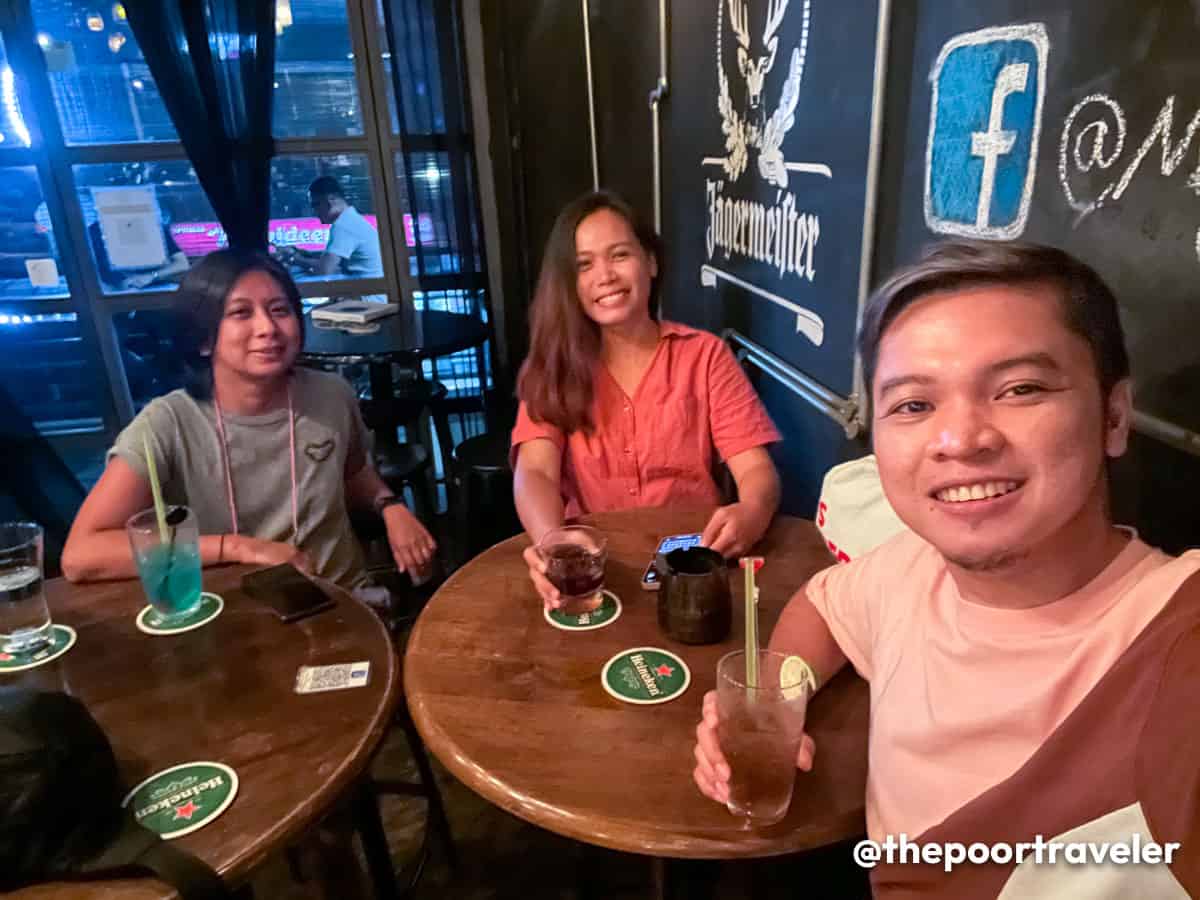
Although located outside Kota Kinabalu, over six kilometers south of the city center, it still draws people, both young and old, to its various food establishments. It is also one of the favorite hangout spots for nightlife among locals.
Location: Kobusak Commercial Centre, Penampang, Kota Kinabalu, Sabah
Opening Hours: The whole complex is open 24/7, but each establishment has its own operating schedule. Check the official Facebook page or website of the establishment you wish to visit.
Getting There: It’s quite challenging to go here if you re taking the public transportation, so the best way is to take a Grab service from Kota Kinabalu. The travel time is about 20 minutes.
This place is THE souvenir haven! Also known as the Filipino Market, it is composed of shops managed mostly by residents originating from the Philippines.
With stalls flanking a portion of Tun Fuad Stephens Street, this waterfront market is a popular shopping destination for locals and tourists looking for specific items and even interesting pieces that they “suddenly need”. Wink wink. With seemingly endless array of options, it’s impossible to leave empty handed. Practice your bargaining skills and learn helpful phrases in their local language for better chances of getting discounts.
Some of the products sold here are local handicraft, musical instruments, clothes, fabrics, traditional clothes, jewelry, accessories, key chains, and more. Should you get hungry, food stalls and seafood pop here and there.
Location: Jalan Tun Fuad Stephen, Pusat Bandar, Kota Kinabalu, Sabah
Opening Hours: 8:00 AM – 10:00 PM (Daily). The schedule might change, so check first with Sabah Tourism Board before going.
Contact Detail: +60 88 212 121 (Sabah Tourism Board)
“The Floating Mosque”
Ensconced in a diamond-shaped manmade lagoon, Masjid Bandaraya Kota Kinabalu (aka Kota Kinabalu City Mosque) covers an area of about six hectares on Pasir Street along the shores of Likas Bay. The mosque is attached to the southeastern side of the lagoon where the entrance is also located.
Officially opened in February 2000 after Kota Kinabalu acquired its city status, the mosque attracts not only worshipers but also tourists with its blue and gold dome and four minarets. The modern Arabic architectural style was inspired by the second holiest site in the Islam religion, the Nabawi Mosque in Medina. It is also one of the popular photography subjects in Kota Kinabalu.
Non-muslims are welcome to visit the mosque outside prayer times and must wear proper attire — no sleeveless and shorts. Cover up clothing can be rented from the management. All visitors are also required to register at Kota Kinabalu City Mosque Tourism Management. Follow the rules and respect the place.
Note that this is not the city’s main mosque. That title belongs to Sabah State Mosque (Masjid Negeri Sabah) in Sembulan.
Location: Jalan Pasir, Kampung Likas, Kota Kinabalu, Sabah
Visiting Hours: 8:00 AM – 12:00 PM, 2:00 PM – 3:30 PM, 4:00 PM to 5:30 PM (Saturday – Thursday); CLOSED (Fridays). The schedule might change, so check first with Kota Kinabalu City Mosque Tourism Management before going.
Entrance Fee: RM 5/head
Cover Up Rental: RM 5 – RM 10
Contact Details: +60 88 435 891 / mbrkk2015@gmail.com
From its humble beginnings at a shophouse along Gaya Street in 1965, the Sabah State Museum now sits on a 17-hectare land at Bukit Istana Lama, where the former palace of the British North Borneo Governor was situated.
From the collection of photographs and diaries of George Cathcart Woolley, the museum’s treasured possessions burgeoned into a massive assemblage of artifacts, installations, and exhibits housed in several galleries by category — history, arts, ceramics, brassware, natural history, archaeology, ethnography, and Islamic civilization among others.
From the devoted hands of Sabah Society, the administration duties of the museum was bequeathed to the State Ministry of Community Services in 1981 before it was handed over to the State Ministry of Culture, Youth and Sports. Finally, in April 1984, the museum transferred to its new home where it is presently located. The current museum complex dates back to 1985.
Aside from the museum’s main building, the complex also hosts a zoo, a botanic garden, and a heritage village with a few of Sabah’s indigenous groups’ traditional houses. The museum is located near Sabah State Mosque.
Location: Sabah Museum Complex, Bukit Istana Lama, Jalan Muzium, Kota Kinabalu, Sabah
Opening Hours: 9:00 AM – 5:00 PM (Daily). The schedule might change, so check the official website before going.
Entrance Fee: RM 15/head
‼️ The Signal Hill Observatory Platform is under renovation until September 2023, but people can still trek to the top and still get good views from different spots around the hilltop.
As the highest point in Kota Kinabalu, Signal Hill is one of the best places to take in panoramic views of the city, Gaya Bay, and some of the islands of TAR Marine Park.
Benches are provided by the sidewalk should you get tired or you just want to spend more time admiring the breathtaking scenery.
Padang Merdeka and Gaya Street are the two entry points to the trailhead. Padang Merdeka mainly caters to visitors who opt to drive, while Gaya Street caters to those who want to go there on foot.
The trailhead from Gaya Street is on the side where the Sabah Tourism Board office is located. It is at the end of the street between the Old Town Coffee shop and Jesselton Hotel. You’ll spot the trail sign from the Kota Kinabalu Community Hall (Dewan Masyarakat DBKK). You’ll reach the top in more or less 10 minutes.
Location: 78, Jalan Asrama, Signal Hill, Kota Kinabalu, Sabah
Trail Head Jump-Off Point: Kota Kinabalu Community Hall near Gaya Street
Opening Hours: 24/7 (Hilltop Area); CLOSED for Renovation (Observatory).
Dedicated to Monsopiad, the legendary headhunter warrior of the Kadazandusun people, the largest ethnic group on this side of Borneo.
Privately owned and managed by the direct descendants of Monsopiad, the heritage village was built on the very site where the renowned warrior lived about 300 years ago. Aiming to highlight the life and time of Monsopiad and the rich ancient culture of the Kadazandusun, it was opened to the public in 1979, featuring cultural activities like the Sumazau dance, the Kadazan cuisines, and the traditional bamboo fire lighting.
The most popular attraction is the House of Skulls (Siou Do Mohoing), where 42 skulls hang on display as trophies and proof of Monsopiad’s strength and power as a warrior and defender of his village. Other features are the massive monolith, the suspension bridge, the traditional restaurant, the Grainery (Tangkob), and Monsopiad’s Main House (Kotos di Monsopiad) where some items including padi grinders, ceramic jars, bamboo tools, and costume, are showcased.
The heritage village is located in Penampang, just a few minutes’ drive south from Kota Kinabalu city center.
Location: Kampung Kuai Kandazon, Jalan Putatan Ramayah, Penampang, Sabah
Opening Hours: 9:00 AM – 4:00 PM (Monday, Wednesday – Sunday); CLOSED (Tuesdays). The schedule might change, so check the official website or Facebook page before going.
Cultural Performance Schedule: 11:00 AM (Morning Session); 2:00 PM (Afternoon Session)
Package Tour Rate: RM 55 (Adult); RM 50 (Senior Citizen, 60 y/o and above); RM 35 (Child, 4-12 y/o); RM 30 (PWD). These are international rates inclusive of guided tour, tour guide, cultural activities, cultural show, complimentary drinks, and complimentary gift.
Contact Details: For booking and inquiries, contact +6011-14196484 / +6011-14196488 / info.monsopiadheritagevillage@gmail.com
Nestled off the northwestern coast of Sabah, this group of three islands is a quick day trip from Kota Kinabalu, providing alternative beach destination option for tourists who want to soak up the sun and swim in an uncrowded tropical paradise. Aside from swimming and beach bumming, the common activities are diving, snorkeling, and birdwatching.
Mantanani Besar, the largest of the three and the most popular, houses a few scuba diving resorts. Nature trails also scribble across the island. The other two islands are Mantanani Kecil, housing a small dive lodge, and Lungisan, the smallest of the three. The waters surrounding the islands are home to coral reefs, dugongs, and other marine creatures.
Getting There: The jump-off point is Kota Belud, which is about an hour’s drive north of Kota Kinabalu. From Kota Belud mainland, particularly Kuala Abai Jetty, the travel time by speedboat to the islands is almost an hour.
You can book a tour package inclusive of roundtrip transfers from Kota Kinabalu, boat transfers, lunch, snorkeling gear, jetty and entrance fees. Two options are available — Snorkeling Only or Snorkeling + River Cruise.
As countries continue to ease their COVID-19-related travel restrictions, many airlines are also reopening routes for commercial flights. AirAsia Philippines has recently resumed its Manila-Kota Kinabalu service twice a week. Travel time is over two hours.
Each booking is inclusive of a complimentary 7kg carry-on baggage allowance. For a hassle-free and more comfortable journey, you might want to check its Value Pack, which covers 20kg check-in baggage allowance, standard selection, a meal, and Tune Protect insurance (for baggage delay & 1 hour on-time guarantee protection). Meanwhile, their Premium Flex option allows you to change the date and time of your flight up to two times.
For convenience, seamless booking of flights and hotels, and great deals, you may want to download and check the company’s fully-integrated platform, the airasia Super App, offering flight booking and other supplementary services and products such as online shopping, insurance, and ride-hailing and delivery services (when applicable/available).
Written by Asta Alvarez
Photos and additional words by Yosh Dimen
Our recent trip to Kota Kinabalu was made possible by AirAsia Philippines.

